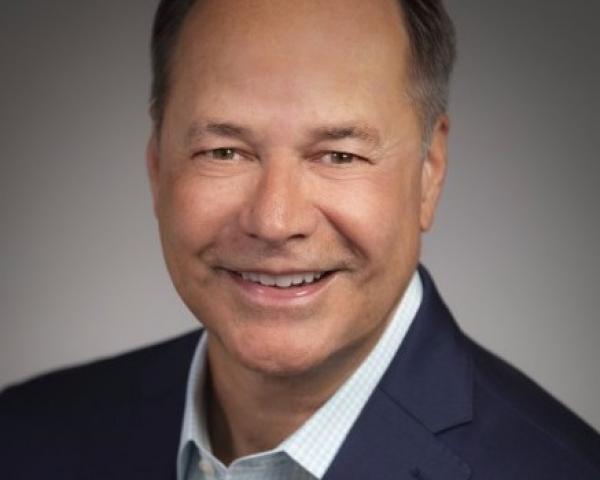We were recently having a discussion with insurance industry peers, bemoaning a vendor announcement of significantly lower pricing for a popular service in a fiercely competitive segment of the collision repair industry. As we thought about it more broadly, we agreed that the announcement was just the latest in a long series of strategic decisions that reflect the serious threat of a problem we call a "race to the bottom."
The term "race to the bottom" describes a competitive situation where companies lower prices to gain an advantage. The origins of this process are often thought to be a result of globalization and government attempts to bolster their economies. Race to the bottom tactics most often spark a destructive cycle in which the ultimate outcome is negative for all involved.
The property/casualty insurance ecosystem is one of the largest U.S. economic segments and touches hundreds of millions of consumers and businesses. It is a victim of this race to the bottom in many serious ways – some well-recognized but even more that are less visible and rarely discussed candidly. The recent roller coaster cycles of steep rate increases, underwriting losses now turning into gains and corresponding efforts to contain operating costs also have downstream implications to scores of industry service and solution providers.
Property & Casualty Insurance Ecosystem
Prior to 2021, both auto and homeowner insurance lines experienced this very competitive scenario. Advertising budgets swelled, with leading carriers like Progressive spending at $1.95 billion and GEICO at $1.13 billion in 2020. "Switch and save" marketing was everywhere with telematics, usage-based-insurance offers to "bundle and save" luring price-sensitive consumers.
More glaring and lasting was the ramp up to today's runaway homeowner insurance premiums. Weather exposure and inflation attracted much-deserved attention, obscuring what was developing in plain sight during the same period. Insurance to value (ITV) was rapidly eroding as housing prices shot up, followed by steep repair/rebuild costs from 2021 to the present. Rates were simply not keeping pace and were already well behind due to years of suppressed rates: California's Prop 103 contained rates, only for there to be a massive reckoning following the Los Angeles wildfires.
Combined, this has been one of the most disruptive insurance cycles in decades, with highly competitive pressures serving as the "race to bottom" catalyst.
CATALYSTS AND IMPLICATIONS
Private equity and consolidation: The services side of the property/casualty insurance industry – particularly personal insurance claims services – was historically as fragmented a marketplace as any, characterized by many thousands of smaller family-owned businesses. These markets (collision repair, auto salvage, independent appraisers and adjusters, repair and home renovation contractors, software providers and numerous others) were ripe for consolidation, a process that can yield large gains over time but requires immense amounts of investment capital and expertise. Many large private equity funds with mountains of "dry powder" (free cash) entered these spaces, which has triggered many aspects of this race to the bottom. And this is still unfolding.
Reduced profitability: Lower premiums may constrain carriers' ability to adequately cover claims and other operational costs and, in the worst cases, lead to insolvency.
Lower underwriting standards: Less stringent underwriting and risk assessment standards can lead to adverse selection, leaving carriers overweight with high-risk policies and further threatening profitability.
Brand and reputational damage: If carriers prioritize low costs over customer experience, brand loyalty declines. A reputation for poor claims service or missing coverage can make it difficult to attract and retain profitable customers, even at lower prices.
Innovation stagnation: A focus on price competition can stifle innovation in products and services in the name of cost savings and perpetuates product and service commoditization.
The Ecosystem
Effect on ecosystem partners: The majority of insurer operating and claim costs are external, and as carriers seek to contain and reduce these costs, they tend to impose their leverage on their business partners throughout the ecosystem.
Pressure on compensation and commissions: The race to the bottom can affect how insurers compensate independent agents and brokers. This can pressure reps to recommend the cheapest policy, even if it is not the best fit for the customer's needs.
Disruption of the traditional role of agents: The shift toward lower cost digital-first information models threatens the traditional agent's role as a trusted advisor, potentially leading to their replacement by apps or automated systems.
Claim costs: Pressure to reduce loss adjustment expenses (LAE) and cutting full-time equivalent (FTE) labor has been continuing. The corresponding effect (but hard to quantify with precision) on loss costs is now catching up, and job cuts are turning into job replacements and additions of adjusters. After a decade of hammering LAE downward, containing indemnity payouts is now center stage.
The Customers
Protection gaps: Customers may be lured by low premiums without understanding that their policy offers less coverage than they need. This leaves them exposed and vulnerable in the event of a large claim.
Higher out-of-pocket costs: When claims are denied or coverage is insufficient, customers often face unexpectedly high out-of-pocket expenses. This is particularly evident in healthcare, where medical debt is a major issue.
Poor claims experience: To cut costs, some insurers may invest less in their claims departments, leading to protracted, difficult, and adversarial claims processes. This can cause significant stress for customers during an already difficult time.
Eroding trust: The focus on aggressive pricing and cost-cutting undermines customer trust in the insurance industry as a whole. Many customers already view insurance as a necessary evil, and a negative experience can reinforce this sentiment.
Counterarguments and Debate
Not everyone agrees that a race to the bottom is an inevitable consequence of competition. Some economists and commentators argue that it is a myth, especially in the context of globalization. A 2023 article from the Cato Institute argues that global trade has generally led to improved working conditions and higher wages, with most foreign direct investment still flowing to relatively wealthy countries.
But proponents of free trade suggest that companies and investors are ultimately more interested in a skilled workforce and stable institutions, which are more common in countries with higher standards.
However, other research has found empirical evidence supporting the theory, particularly regarding the effects of globalization on labor standards. This divergence of evidence means the debate over the existence and effect of a "race to the bottom" is continuing.
Avoid the Bottom
In the property/casualty industry, these conditions may be dismissed as underwriting cycles as famously illustrated in Paul Ingrey's "Insurance Clock." (See, Insurance Industry's Mixed Signals.) On the one hand, you have new, high premiums, returning profits and growth appetite on the rise. On the other hand are uncertain and fluid economic conditions, weather exposure and threats from legal abuse trends signaling caution. Which will prevail is the question du jour, and has the new race to the bottom already begun?
We believe that this race to the bottom is avoidable even while mitigating its effect on earnings. Scale clearly affords efficiencies, but managing how to wield this leverage without affecting the ultimate quality of outcomes is paramount. Price competition is a positive market dynamic that benefits customers, but irrational and cannibalizing pricing serves nobody. Keeping safety and consumer satisfaction at the top of our strategic priorities is paramount and if not implemented voluntarily will only invite unwanted outside regulation.
As always, common sense is mandatory as we move forward.
AI Disclosure: AI tools were used for some content generation in conjunction with our own subject matter expertise. The authors take full responsibility for the accuracy of the final content.









